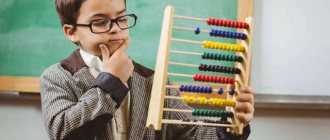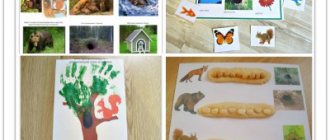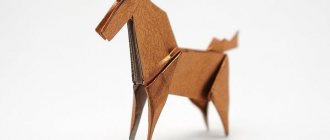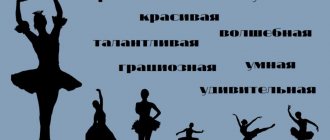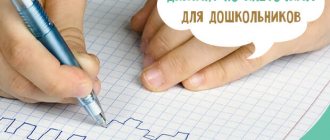The requirements of the modern school curriculum are such that by the time a child enters first grade, elementary mathematical concepts must be formed. These include knowledge of numbers and basic symbols, ability to count within ten and cope with simple math problems that require addition and subtraction for children aged 5-6 years. At the same time, as is known, preschool children absorb information that is presented in a playful form much faster and easier. Specialists from the development site “Razumeikin” sought to take these factors into account when preparing online tasks for teaching mathematics to 5-year-old children. All exercises are presented in an easy, interesting way.
The “Other Mathematical Concepts” section introduces the child to the basic symbols (“greater than,” “less than,” and “equal to”) and teaches them how to use them. Using our website you can study easily and productively. By completing math problems, 6-year-old preschoolers learn ordinal counting and the basics of measuring length, mass, and volume. Children learn to understand and analyze the dependence of the measurement result on the measurement value. Assignments as part of the online mathematics training program for children 5-6 years old give an idea of the basic geometric shapes and bodies in pictures, as well as a basic concept of tables.
When developing a set of exercises for children of senior preschool age, our specialists tried to make them not only as understandable and exciting as possible, but also truly useful in practical terms. Almost all online math tasks for 6-year-old children are designed in the form of a game and have detailed explanations. You can find them in the training video before the exercise. An explanation for the test tasks in the section “Mathematics for preschoolers 5-6 years old” is also given if the answer the child gave turned out to be incorrect or insufficiently complete.
Logic puzzles for preschoolers 5-6 years old (for attentiveness, memory development)
10 interesting and exciting tasks for preschoolers. Source: www.liveinternet.ru
Task 1: Katya, Galya and Olya drew heroes from the village of Prostokvashino: Pechkin, Sharik and Matroskin. Who drew who, if Katya didn’t draw Pechkin and Sharik, and Galya didn’t draw Pechkin?
Task 2: There is a maple tree. There are two branches on the maple tree, on each branch there are two cherries. How many cherries are there in total?
Problem 3: If a goose stands on two legs, then it weighs 4 kg. How much will a goose weigh if it stands on one leg?
Problem 4: Two sisters have one brother each. How many children are in the family?
Problem 5: A giraffe, a crocodile and a hippopotamus lived in different houses. The giraffe did not live in a red or blue house. The crocodile did not live in a red or orange house. Guess which houses the animals lived in?
Problem 6: Once upon a time there were three girls: Tanya, Lena and Dasha. Tanya is taller than Lena, Lena is taller than Dasha. Which girl is the tallest and which is the shortest? What is the name of which one?
Problem 7: Misha has three carts of different colors: red, yellow and blue. Misha also has three toys: a tumbler, a pyramid and a spinning top. In the red cart he will not carry a spinning top or a pyramid. The yellow one is not a spinning top or a tumbler. What will Misha carry in each of the carts?
Problem 8: The dragonfly is not sitting on a flower or on a leaf. The grasshopper does not sit on a fungus or on a flower. The ladybug is not sitting on a leaf or on a fungus. Who is sitting on what? (It’s better to draw everything.)
Problem 9: Alyosha, Sasha and Misha live on different floors. Alyosha lives neither on the top floor nor on the bottom. Sasha lives neither on the middle floor nor on the bottom. On what floor does each boy live?
Problem 10: Three plates contain different fruits. The bananas are not in a blue or an orange plate. Oranges are not in a blue or pink plate. What plate are the plums in? What about bananas and oranges?
Recommendations for conducting mathematical classes
Let's start with the fact that mathematics classes for children 5-6 years old should be held in a playful way. This method of learning material is optimal for preschoolers. If you just sit your child down in front of his textbooks, he may quickly get bored and switch his attention to something more interesting (the landscape outside the window, fancy patterns on the wall, etc.). As a result, such “burdensome” and “tiring” lessons will only cause him irritation. And every invitation from parents to study mathematics will be met with hostility. Here are other tips for organizing lessons:
- Exercise only when the child is in a good mood. Attempts to force a preschooler to study without his desire can lead to absent-mindedness and poor concentration. Since children 5-6 years old have predominantly involuntary memory, it is much easier for them to remember information that evokes positive emotions.
- Study regularly, periodically adding something new to your lessons. It's no secret that young children become bored with monotony very quickly. And if they lose interest, the information is unlikely to stick in the heads of young students. In addition, lessons should be conducted systematically so that preschoolers can constantly update their knowledge and develop acquired skills and abilities.
- If a child fails at something or cannot understand the essence of the task, do not be nervous and irritated . You need to methodically explain the task to the preschooler until he has no questions left. Excessive parental demands and negative assessments of a child’s actions can once and for all discourage him from studying mathematics.
- And finally, you cannot “stand” over children, forcing them to solve one problem after another. Although this method of teaching will lead to the assimilation of the material, it will discourage the preschooler from learning. Therefore, all classes should be held in an easy and interesting way. Developmental mathematics for children 5-6 years old requires the child’s involvement in the process, his direct participation in the development and solution of problems, personal initiative, and the use of fantasy and imagination. The combination of all these components is the key to effective learning.
L.G. Peterson, developer of the elementary mathematics course “Igrachka”: “Often, the preparation of preschoolers comes down to teaching them reading, writing and counting. According to research, serious difficulties in primary school are faced not by those children who have a meager amount of skills and knowledge, but by those who demonstrate passivity and do not want to think and learn something new. In this regard, the main goal of primary training should be the diversified development of the child: his creative and intellectual abilities, personality traits, motivational factors. In this case, special attention must be paid to connecting fantasy and imagination. It is creativity, along with the ability to create and invent something new, that contributes to the formation of a preschooler’s personality, the development of his independence and cognitive interest.”
Logical problems in mathematics for ingenuity and ingenuity with answers
AWARENESS TASKS
- There were 9 steamships at sea. 2 ships docked at the pier. How many ships are there at sea? (9 ships.)
- There were 7 brothers walking, each brother had one sister. How many people walked? (8 people).
- What kind of dishes can you not eat anything from? (From empty.)
- The animal has 2 right legs, 2 left legs, 2 legs in front, 2 in back. How many legs does an animal have? (4 legs.)
- 9 sharks were swimming in the sea. They saw a school of fish and dived deep. How many sharks swam in the sea? (9 sharks, only they dived.)
- The vase contains 3 tulips and 7 daffodils. How many tulips are there in a vase? (There were 3 tulips in the vase.)
- 7 boys cleared one path in the garden. How many paths did the boys clear? (7 tracks.)
- 2 brothers each drew 2 drawings as a gift to their grandfather. How many drawings did grandfather receive? (4 pictures.)
- The grandmother knitted scarves and mittens for her grandchildren. In total she knitted 3 scarves and 6 mittens. How many grandchildren did your grandmother have? (3 grandchildren - explain the answer.)
- Grandfather, grandmother, granddaughter, Bug, cat and mouse pulled and pulled and finally pulled out the turnip. How many eyes saw the turnip? (12 eyes.)
Children collected an autumn bouquet in the park. It contained 5 maple, 4 birch, 2 oak, 1 aspen leaves. How many different trees did the bouquet come from? (From 4 trees.)
logicheskie_zadachi
Third task: “Solve an arithmetic problem”
The teacher needs to read the problem... The children then need to write down the solutions using signs, numbers in the box of numbers. The winner is the team whose participants gave the correct answers and quickly completed the task.
Tamara has three flowers. Kostya gave her two more. Help me count the flowers.
Children write down solutions.
Math task in pictures No. 8
If a child refuses to count
Some children categorically refuse to learn counting skills even through play. Often the reason for this is the wrong approach of parents to conducting classes. Having tried to work with a preschooler a couple of times using the “sit and decide” scheme, many adults discourage their desire for mathematics for a long time. However, a dislike for counting may be explained by the child being overloaded with various developmental activities or sections. Or maybe the preschooler simply doesn’t like his parents’ reaction to incorrect answers. And there can be a huge number of similar reasons. How should parents behave if their children refuse to learn to count?
Be patient
Perhaps the child does not understand mathematics due to his young age. After all, not all five-year-old children have the ability to calculate. In addition, preschoolers with a humanitarian mindset can ignore numbers until they go to first grade. On the other hand, many of them by this time already read quite fluently and even know how to write. Therefore, you should not overreact to your child’s reluctance to count. After all, being successful “on all fronts” is simply unrealistic.
Use the method of “coercion by persuasion”
If a preschooler has an aptitude for mathematics, but simply does not want to learn, you need to convey to him the need for this process. After all, you can’t do without counting skills. We need to talk about this as often as possible, demonstrating this fact with real-life examples. So, while moving around the city on a bus with a child, a mother can say to him, “Please help me, my hands are full. Take some change from my jacket pocket, count out fifteen rubles and pay for the fare. Oh, I completely forgot, you can’t count. You'll have to deal with it yourself." By periodically creating such situations, you can gradually convince the child that it is time to learn to count.
Perform “number attacks”
If a child does not want to perceive numbers, you need to surround him with them. To do this, you should prepare a lot of cards with numbers and pictures. By hanging sheets of paper around the perimeter of the apartment and focusing attention on them from time to time, it will be much easier to teach your child to count. It is also necessary to include numbers in speech as often as possible when communicating with a child. You can play hide and seek with him, loudly counting down the time, teach poems like “one, two, three, four, five, the bunny went for a walk,” show unobtrusive educational cartoons with numbers, etc. Over time, the preschooler will certainly become interested in mathematics.
Conduct “sweet activities”
If a preschooler does not want to accept either classical or game methods of teaching counting, you can use a win-win technique. Perhaps not a single child will refuse sweets. So why not set the condition for children that they will receive candy only when they can name the correct amount. This will spur in preschoolers the desire to quickly master the skill of counting.
Thus, mathematics for preschoolers is an incredibly interesting and exciting science. The main thing is to choose the right form of education, which will be as enjoyable and unburdensome as possible for the child. Ideas for entertaining lessons are all around us; we just need to use our imagination and look at familiar things from a new angle.
Math games
Many children with a humanitarian mindset tend to consider mathematics a rather boring science. However, it is enough to show the children the other side of this subject and their opinion will change dramatically. Mathematical games for children 5-6 years old will help adults with this. Let's list some of them:
"Count the Claps"
This game contributes to the development of not only mathematical abilities, but also auditory perception. Clapping your hands with varying strength and frequency, you need to ask the child to count the number of beats. You can complicate the task by asking your child to reproduce what he heard.
"Hocus Pocus"
Having taken several small objects (sweets, buttons), the adult clenches them in his fists and hides them behind his back. Next, the child is given a simple math problem. For example: “I only have seven buttons. I hold four in my right hand, how many are held in my left fist?” If the preschooler answered correctly, you can invite him to switch roles. Let him come up with the problem himself and calculate its solution in his mind. If the child gave the wrong answer, you should hide the objects behind your back again, but in a different quantity.
"Find the odd one out"
An adult cuts out several dozen pictures of various categories from magazines: transport, food, plants, furniture, etc. Next, you should lay out images of the same theme on the table, adding a few extra objects to them. The child is given the task to count all the pictures, find “foreign” objects and name their number. Finally, the remaining images of the same category are counted.
"Say the number"
This game is a group game. The adult leader stands in the center of the circle formed by the children and one by one throws a ball to the kids, calling any number. Each child, having waited his turn, throws the object back, saying the next number in order. It is advisable to avoid repetition.
Drawing by points
When the child can easily cope with the above exercises, then you can offer him drawing by dots. This is a very exciting activity, since in most cases, you don’t know what kind of picture you will get in the end. Therefore, children enjoy connecting the dots by drawing lines in order from one number to another.
Walking games
Many people remember such games from childhood. Their essence is that the path along which you need to get from one place to another is marked on the playing field. And the players take turns throwing the dice, counting the number of dots rolled up and making a move, again counting. Counting is limited to numbers from 1 to 12, but the child learns to add. For example, 3 and 6 points fell on the dice. And the player’s task is to calculate how much 3+6 is. He can make a move only after he gets the correct result. You can involve the whole family in the game process, it will be an exciting pastime.
"Shop"
This role-playing game is familiar to many adults. After all, little inventors periodically involve their parents in their fun. So they become sellers and offer customers to buy products from them. Or they themselves come to the store to buy toys. Usually, various pieces of paper act as money. But it would be much more useful to take a few real coins or buttons and make very real payments with customers. Over time, the concept of “surrender” can be introduced. If cheese costs 3 rubles, and the buyer gives one five-ruble coin, you need to return the extra money to him. A child involved in the game will learn counting and simple mathematical operations much faster.
Eva, mother of seventh-grader Varya: “I taught my daughter to count in her head before school. We started with the simplest numbers, then introduced two-digit and three-digit numbers. Now Varya is 12, she counts faster than her dad and me. And the secret is very simple: the main thing is that the child is involved in the learning process. We introduced our daughter to money very early. When I picked her up from kindergarten, I first gave Varya 5 rubles for candy or chewing gum. She herself calculated whether she had enough money, how much should be left, etc. Gradually the amount increased to 20 rubles. My daughter managed to divide it into several purchases, making the necessary calculations in her head. Now mathematics is her favorite school subject, she consistently takes part in all Olympiads.”
Entertaining mathematics
Parents of preschoolers should use their imagination when developing activities. It is not at all necessary to conduct lessons sitting at the table when there are so many exciting things and phenomena around. So why not use them for arithmetic purposes? For example, you can involve children in preparing their favorite dishes, be it pizza or apple pie. Ask your child to count out two cups of flour and allow them to pour it into a prepared bowl themselves. Give your preschooler the task of fetching five eggs from the refrigerator, carefully placing them in a bowl. Let the child independently add three tablespoons of sugar, etc., to the dough. Such entertaining mathematics will not only bring great pleasure to the child, but will also be etched in his memory for a long time.
You can count anything, anywhere. To do this, it is not at all necessary to find time and set up your child for classes.
Most likely, he himself will not understand that he is involved in the learning process. For example, when getting ready for kindergarten in the morning, ask your preschooler to count the number of buttons on his shirt. And when you arrive at the hospital, determine the number of patients sitting in the queue. And how many objects to count can you find while walking down the street! Cars near the house, people at the bus stop, birds flying in the sky, floors of buildings - and this list is almost inexhaustible.
Alexandra, mother of eight-year-old Andrey: “My son and I learned to add and subtract at the age of 5. And they did it immediately in their minds, without using sticks or bending their fingers. Let's go somewhere, count the objects, and then add 1 to them. For example, three cars are parked near the store and then another one drives up to it. The son adds up in his mind and gives the answer. Later they began to add 2, 3, and so on in increasing order. Then they changed the order of calculations. They began to add a larger number to a smaller number. This, of course, was more difficult, but over time we got used to it. We walk a lot. At a minimum, a daily “walk” to the garden and back. Now we are already visiting the school, the journey to which takes 20 minutes in one direction. So there's plenty of time. We’re done with counting, now we’ve started learning English words using the same method.”
Video on the topic
SOURCE
Mathematics Message Series:
Part 1 - Make Your Own Game Series. Find a house for each number. Part 2 - Geometric shapes. Lessons 3 in 1. ... Part 26 - How to easily learn the Multiplication Table. Part 27 - Fun counting for preschoolers. Problems within the top ten in pictures. Part 28 - Mathematics for children 5-6 years old Part 29 - Teaching your child to count - easy, fun, effective and interesting: a guide for moms and dads.


